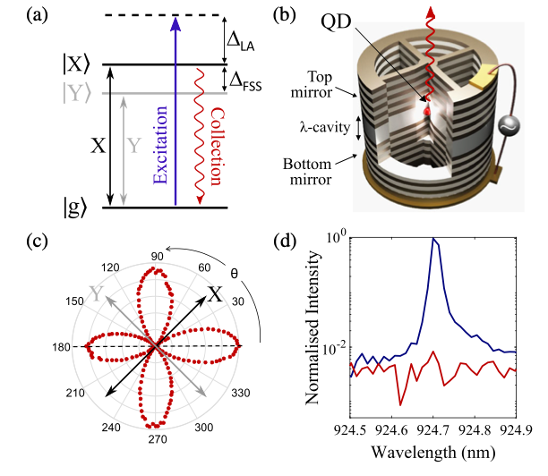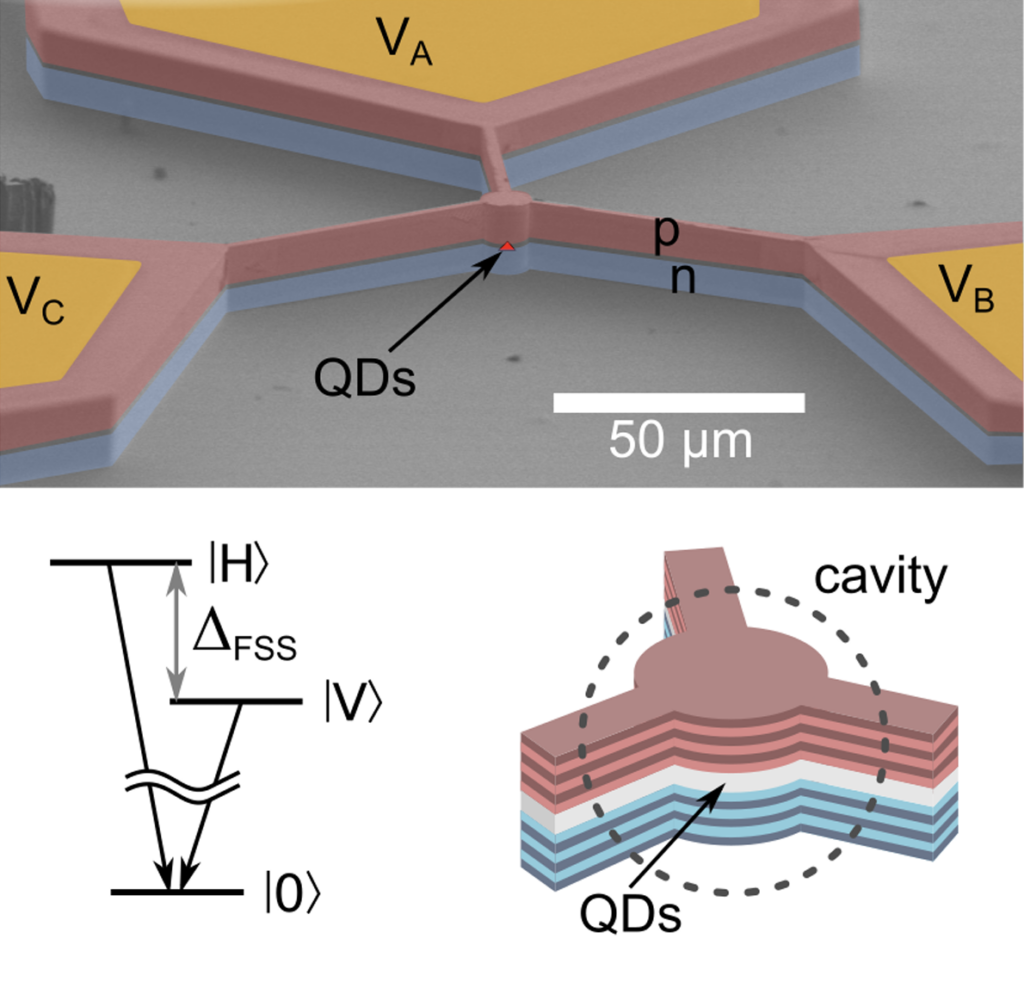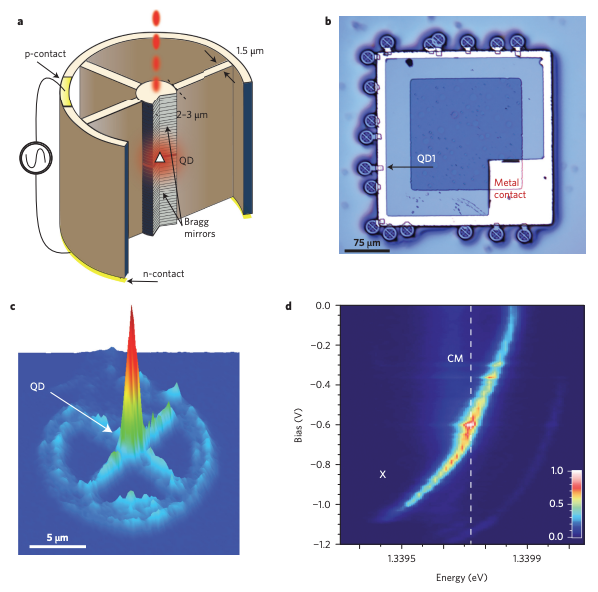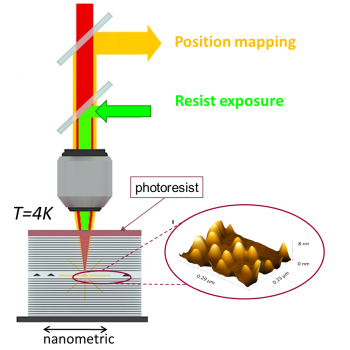Device benchmarking

-
Semiconductor quantum dots are increasingly recognized as a robust platform for generating highly efficient quantum light, despite challenges related to scalability and the inhomogeneity of their characteristics. In an effort to address these issues, Ollivier et al. (2020) have rigorously benchmarked the performance of fifteen deterministically fabricated single-photon sources. Their findings highlight an average indistinguishability of 90.6 ± 2.8%, a single-photon purity of 95.4 ± 1.5%, and exceptional homogeneity in operation wavelength and temporal profile. Notably, these sources achieved state-of-the-art brightness, with an average first lens brightness of 13.6 ± 4.4%. The study found that while the brightest emissions were from charged quantum dots, the highest quantum purity came from neutral dots. This benchmarking not only advances our understanding of quantum dot characteristics but also paves the way for large-scale production of identical sources by outlining potential improvements and innovative identification techniques for the emitting states.
Reference:
- H. Ollivier et al. “Reproducibility of High-Performance Quantum Dot Single-Photon Sources,” ACS Photonics, 7(4), 1050-1059, (2020).
Off-resonant quantum dot excitation schemes

Semiconductor quantum dots within optical cavities have shown considerable promise as single-photon sources, particularly through innovative excitation schemes. We have used phonon-assisted excitation to harness the intrinsic linear dipole of a neutral quantum dot, further improving its deterministic operation. This technique facilitates the emission of fully polarized single photons with high degrees of linear polarization and population inversion, comparable to those achieved through resonant excitation. This excitation scheme not only demonstrated exceptional single-photon purity and indistinguishability but also achieved a notable first lens brightness, marking significant progress in the development of reliable quantum light sources.
Other excitation strategies are being investigated to further optimize photon number coherence and population inversion.
Reference:
- S. E. Thomas et al. “Bright Polarized Single-Photon Source Based on a Linear Dipole,” Physical Review Letters, 126(23), 233601 (2021)
Symmetry control

To optimize the electrical tuning of single photon sources, our team has advanced the integration of semiconductor quantum dots within photonic microstructures, enhancing quantum network scalability through precise electrical control of quantum dot states and emission. We’ve innovated a photonic structure using a λ/2-AlAs cavity with GaAs/AlGaAs Bragg mirrors, in a p-i-n diode configuration, and pillars linked to a larger ohmic-contact surface via 1D-bridges. This setup confines the fundamental mode at the pillar center, maintaining high quality factors, and allows for deterministic in-situ lithography to position quantum dots accurately. Upon voltage application, quantum dot lines are tuned into resonance with the cavity mode, achieving an experimental extraction efficiency up to 55%. Our development of quantum dots in electrically controlled cavities significantly reduces charge noise and demonstrates indistinguishability up to 0.9956 with a photon extraction of 65%, marking a major leap in optical quantum technology performance.
References:
- A. K. Nowak et al., “Deterministic and electrically tunable bright single-photon source,” Nature Communications, 5, 3240 (2014).
- N. Somaschi et al., “Near-optimal single-photon sources in the solid state,” Nature Photonics, 10(5), 340-345 (2016).
Electrical control
To optimize the electrical tuning of single photon sources, our team has advanced the integration of semiconductor quantum dots within photonic microstructures, enhancing quantum network scalability through precise electrical control of quantum dot states and emission. We’ve innovated a photonic structure using a λ/2-AlAs cavity with GaAs/AlGaAs Bragg mirrors, in a p-i-n diode configuration, and pillars linked to a larger ohmic-contact surface via 1D-bridges. This setup confines the fundamental mode at the pillar center, maintaining high quality factors, and allows for deterministic in-situ lithography to position quantum dots accurately. Upon voltage application, quantum dot lines are tuned into resonance with the cavity mode, achieving an experimental extraction efficiency up to 55%. Our development of quantum dots in electrically controlled cavities significantly reduces charge noise and demonstrates indistinguishability up to 0.9956 with a photon extraction of 65%, marking a major leap in optical quantum technology performance.
References:
- A. K. Nowak et al., “Deterministic and electrically tunable bright single-photon source,” Nature Communications, 5, 3240 (2014).
- N. Somaschi et al., “Near-optimal single-photon sources in the solid state,” Nature Photonics, 10(5), 340-345 (2016).
In situ lithography
To enhance the efficiency of quantum devices, our group has developed a deterministic technique for embedding quantum dots in optical microcavities. This method, known as in-situ lithography, ensures ideal coupling by aligning the quantum dot with a single mode of the electromagnetic field. Using low-temperature photolithography at 10K with in-situ monitoring of quantum dot emission, we precisely map the quantum dot’s position and expose the photoresist to define a disk centered on the dot. This alignment allows for targeted etching, ensuring the quantum dot is positioned at the maximum of the fundamental optical mode. This process results in a near-unity fabrication yield, significantly surpassing traditional methods, and enables the scalable implementation of devices operating in both weak and strong coupling regimes.
References:
- A. Dousse et al., “Controlled Light-Matter Coupling for a Single Quantum Dot Embedded in a Pillar Microcavity Using Far-Field Optical Lithography”, Phys. Rev. Lett. 101, 267404 (2008).
- A. Dousse et al., “Scalable implementation of strongly coupled cavity-quantum dot devices”, Appl. Phys. Lett. 94, 121102 (2009).

